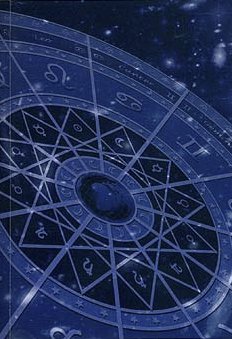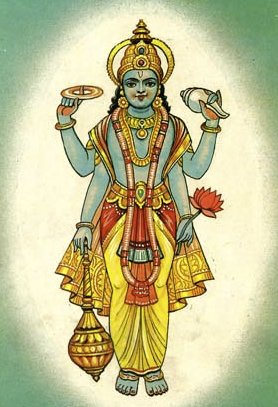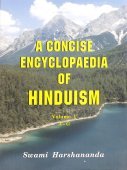Muhurta, Muhūrta, Muhūrtā: 23 definitions
Introduction:
Muhurta means something in Buddhism, Pali, Hinduism, Sanskrit, Jainism, Prakrit, the history of ancient India, Marathi. If you want to know the exact meaning, history, etymology or English translation of this term then check out the descriptions on this page. Add your comment or reference to a book if you want to contribute to this summary article.
In Hinduism
Jyotisha (astronomy and astrology)
Source: Wisdom Library: JyotiṣaMuhūrta (योग) is a Sanskrit technical term referring a division of time (48 minutes). There are 30 muhūrtas in a single day (vāra; comprises day and night). The term is used throughout Jyotiṣa literature.
Source: Wisdom Library: Brihat Samhita by Varahamihira1) Muhūrtha (मुहूर्थ) refers to one-thirtieth of a solar day, according to the Bṛhatsaṃhitā (chapter 2), an encyclopedic Sanskrit work written by Varāhamihira mainly focusing on the science of ancient Indian astronomy astronomy (Jyotiṣa).—Accordingly, “We shall now proceed to give a brief description of (the qualifications of) a jyotiṣaka. [...] He must have a correct, knowledge of a yuga (43,20,000 Solar years), varṣa (a solar year), āyana (6 solar months), ṛtu (2 solar months), māsa (a solar month), pakṣa (15 solar days), ahorātra (a solar day), yama (one-eighth of a solar day), muhūrta (one-thirtieth of a solar day), nāḍī (one-sixtieth of a solar day or 24 minutes), vināḍi (one sixtieth of a nāḍī or 24 seconds), prāṇa (4 seconds) truṭi (33, 75th of a second) and parts of a truṭi and other divisions of time and also of divisions of space”.
2) Muhūrta (मुहूर्त) refers to an “hour”, according to the Bṛhatsaṃhitā (chapter 11), an encyclopedic Sanskrit work written by Varāhamihira mainly focusing on the science of ancient Indian astronomy astronomy (Jyotiṣa).— Accordingly, “Bhava Ketu is a comet visible only for a single night and in the east, possessing a small disc; it is glossy; the tail is bent like that of a lion. There will be unprecedented happiness in the land for as many months as the number of hours [i.e., muhūrta] for which it continues to be visible; if it should be fearful to look at, fatal diseases will afflict mankind”.
Source: Wikibooks (hi): Sanskrit Technical TermsMuhūrta (मुहूर्त).—A time unit equal to one-thirtieth of a day. Note: Muhūrta is a Sanskrit technical term used in ancient Indian sciences such as Astronomy, Mathematics and Geometry.
Source: INSA Digital Repository: Determination of Ascensional Difference in the LagnaprakaranaMuhūrta (मुहूर्त) is equal to one-fifteenth of a day, indicating that it is not a fixed time unit, but rather varies with the length of the day (and night) over the course of the year, according to Śrīpati (Cf. the commentator of the Muhūrtakalpadruma).

Jyotisha (ज्योतिष, jyotiṣa or jyotish) refers to ‘astronomy’ or “Vedic astrology” and represents the fifth of the six Vedangas (additional sciences to be studied along with the Vedas). Jyotisha concerns itself with the study and prediction of the movements of celestial bodies, in order to calculate the auspicious time for rituals and ceremonies.
Purana and Itihasa (epic history)
Source: archive.org: Shiva Purana - English TranslationMuhūrta (मुहूर्त) refers to an “auspicious hour”, according to the Śivapurāṇa 2.3.7.—Accordingly, after the Goddess (Umā/Śivā) incarnated as Pārvatī by becoming the daughter of Menā:—“[...] The goddess of great brilliance assumed the form of her baby child in front of Menā and began to cry in accordance with the ways of the world. [...] Himavat came to the outer gate of the palace and joined the festivities. With a delighted mind he distributed monetary gifts to the beggars. In an auspicious hour [i.e., muhūrta], in the company of the sages, Himavat named his daughter Kālī and assigned other pleasing names to her. He gave charitable gifts to the brahmins out of love and respect. Varieties of festivities were gone through with suitable music. [...]”.
Source: Cologne Digital Sanskrit Dictionaries: The Purana Index1) Muhūrta (मुहूर्त).—A measurement of time; thirty kalas making a day and a night, a muhūrta; 15 for day and 15 for night on an equinoctial day; 45 kalas one muhūrta; 15 muhūrtas make a day exactly in Viṣuvat; division of day into units of three muhūrtas;1 those of the afternoon are Raudra, Sārpa, Maitra, Pitṛya, Vāsava, Āpya, Vaiśvadeva and Brāhma; those of the day are Prājāpatya, Indra, Indrāgni, Nirṛti, Vāruṇa, Aryamana, and Bhaga; these are to be calculated according to the shadow cast by a gnomon; the muhūrtas of the night are the Ajaikapad, Ahirbudhnya, Pūṣāśvi, Yama, Āgneya, Prājāpatya, Saumya, Āditya, Bārhaspatya, Vaiṣṇava, Sāvitra, Tvāṣṭra, Vāyavya and Samgraha; time reckoned by the movement of the moon.2 Kṛṣṇa born in the Vijayamuhūrta;3 the eighth muhūrta said to be kutapa, auspicious for beginning any activity; the sun becomes manda or inactive then.4
- 1) Bhāgavata-purāṇa III. 11. 8; Brahmāṇḍa-purāṇa II. 13. 16; 21. 95, 116-22; 24. 56; 29. 6; IV. 1. 76, 213, 216; 32. 14; Matsya-purāṇa 124. 86-91; 142. 4; 203. 10; Vāyu-purāṇa 30. 13; 100. 215, 218; Viṣṇu-purāṇa I. 3. 9; II. 8. 59-61; VI. 3. 9.
- 2) Brahmāṇḍa-purāṇa III. 3. 32, 39-45; Vāyu-purāṇa 66. 33.
- 3) Brahmāṇḍa-purāṇa III. 71. 206; 72. 30.
- 4) Matsya-purāṇa 22. 84-5.
2) Muhūrtā (मुहूर्ता).—A daughter of Dakṣa and one of Dharma's ten wives; begot Muhūrtaka gaṇa.*
- * Bhāgavata-purāṇa VI. 6. 4 and 9; Brahmāṇḍa-purāṇa III. 3. 3 and 32; Matsya-purāṇa 5. 16, 18; 203. 10; Vāyu-purāṇa 66. 33; Viṣṇu-purāṇa I. 15. 105-6.
Muhūrtā (मुहूर्ता) refers to one of the ten of Dakṣa’s sixty daughters given to Dharma in marriage, according to one account of Vaṃśa (‘genealogical description’) of the 10th century Saurapurāṇa: one of the various Upapurāṇas depicting Śaivism.—Accordingly, Dakṣa gets married to Asikni, the daughter of Prajāpati Viraṇa and begot sixty daughters. [He gave ten daughters to Dharma in marriage] [...] The ten wives of Dharma are Sādhyā, Viśvā, Saṃkalpā, Muhūrtā, Arundhatī, Marutvatī, Vasu, Bhūnu, Lambā and Jāmī. Muhūrta was born from Muhūrtā.

The Purana (पुराण, purāṇas) refers to Sanskrit literature preserving ancient India’s vast cultural history, including historical legends, religious ceremonies, various arts and sciences. The eighteen mahapuranas total over 400,000 shlokas (metrical couplets) and date to at least several centuries BCE.
Vaishnavism (Vaishava dharma)
Source: Pure Bhakti: Arcana-dipika - 3rd EditionMuhūrta (मुहूर्त) refers to “forty-eight minutes”, according to the Arcana-dīpikā (manual on deity worship).—One daṇḍa comprises twenty-four minutes, and two daṇḍas, or forty-eight minutes, comprise one muhūrta. In one complete day of twenty-four hours, there are thirty muhūrtas. In the last part of the night, the segment of time consisting of the two muhūrtas (one hour and thirty-six minutes) before sunrise, is called aruṇodaya, or dawn. The first of these two muhūrtas is called the brāhma-muhūrta. This brāhma-muhūrta is the most beneficial time of the day for the cultivation of spiritual life.
Source: Pure Bhakti: Brhad BhagavatamrtamMuhūrta (मुहूर्त) refers to:—A time period of fortyeight minutes. (cf. Glossary page from Śrī Bṛhad-bhāgavatāmṛta).

Vaishnava (वैष्णव, vaiṣṇava) or vaishnavism (vaiṣṇavism) represents a tradition of Hinduism worshipping Vishnu as the supreme Lord. Similar to the Shaktism and Shaivism traditions, Vaishnavism also developed as an individual movement, famous for its exposition of the dashavatara (‘ten avatars of Vishnu’).
General definition (in Hinduism)
Source: Wisdom Library: HinduismMuhūrta (मुहूर्त, “division of time”).—In the Hindu division of time a day is divided in thirty parts called muhūrtas, each with a duration of forty-eight minutes. The composition of these “moments” are defined in the Vedic Brāhmanạs.
These are the names:
- Samudra-muhurta,
- Brahma-muhūrta,
- Dyumadgadyuti-muhūrta,
- Viṣṇu-muhūrta,
- Jīva-muhūrta (also known as Amṛta-muhūrta),
- Aditi-muhūrta,
- Kaṇḍa-muhūrta,
- Agni-muhūrta,
- Vidhātṛ-muhūrta,
- Yama-muhūrta,
- Aśvinī-muhūrta,
- Puṣya-muhūrta,
- Ahirbudhnya-muhūrta,
- Ajapāda-muhūrta,
- Girīśa-muhūrta,
- Bhaga-muhūrta,
- Aryaman-muhūrta,
- Varuṇa-muhūrta,
- Vāhinī-muhūrta,
- Naktanakarā-muhūrta,
- Puruhūta-muhūrta,
- Sutamukhī-muhūrta,
- Viśvedevā-muhūrta,
- Vidhi-muhūrta,
- Varaha-muhurta,
- Vasu-muhūrta,
- Pitṝ-muhūrta,
- Mitra-muhūrta,
- Āhi-muhūrta,
- Rudra-muhūrta
The year is reckoned to comprise 360 days-and-nights, each having thirty muhūrtas (“hours” of forty-eight minutes), so that one year has 10,8000 muhūrtas.
The thirty muhūrtas are based on the parallelism of three principal time cycles, each split into luminous and dark halves in the Veda:
- a (twenty-four-hour) nychthemeron of thirty muhūrtas comprising a day of fifteen muhūrtas and a night of fifteen muhūrtas;
- a month of thirty days comprising the “white half” of the waxing moon (fifteen days) and the “black half” of the waning moon (fifteen days);
- and a year of twelve months (twenty-fou half-months), comprising the auspicious “northern course” of the sun (six months or twelve half-months), and its ominous “southern course” (again six months or twelve half-months).
In Yajurvedic ritual, it was of the greates importance to make a sacrifice to accompany every transition from one half to the other in these three time cycles.
In Buddhism
Mahayana (major branch of Buddhism)
Source: De Gruyter: A Buddhist Ritual Manual on AgricultureMuhūrta (मुहूर्त) refers to a “short time”, according to the Vajratuṇḍasamayakalparāja, an ancient Buddhist ritual manual on agriculture from the 5th-century (or earlier), containing various instructions for the Sangha to provide agriculture-related services to laypeople including rain-making, weather control and crop protection.—Accordingly, “Now there lived a Brahmin called Viṣṇudatta in Navanagara. [...] He enchanted an iron stake and placed it on the head of that Nāga. The head of the Nāga burst and it felt great pain. The Nāga became extremely angry with great fury. Then in a moment (kṣaṇa), an instant (lava), a short time (muhūrta), the Nāga’s body was overcome with great pain by the intensity of swaying. Then because of this rays came forth from its body and the fields of the Brahmin were burnt. [...]”.

Mahayana (महायान, mahāyāna) is a major branch of Buddhism focusing on the path of a Bodhisattva (spiritual aspirants/ enlightened beings). Extant literature is vast and primarely composed in the Sanskrit language. There are many sūtras of which some of the earliest are the various Prajñāpāramitā sūtras.
In Jainism
General definition (in Jainism)
Source: Encyclopedia of Jainism: Tattvartha Sutra 5: The category of the non-livingMuhūrta (मुहूर्त) refers to an “Indian-hour” according to the 2nd-century Tattvārthasūtra 5.40.—What is the duration of one nādi? It consists of 38.5 lava. What is an Indian-hour (muhūrta)? It consists of two nādis. What is the meaning of different durations of intra-Indian-hour (antara-muhūrta). Reducing muhūrta by one time-instant or more time-instants results in antara-muhūrta. What is the meaning of bhinna-muhūrta. Reducing muhūrta by two time-instants results in bhinna-muhūrta.

Jainism is an Indian religion of Dharma whose doctrine revolves around harmlessness (ahimsa) towards every living being. The two major branches (Digambara and Svetambara) of Jainism stimulate self-control (or, shramana, ‘self-reliance’) and spiritual development through a path of peace for the soul to progess to the ultimate goal.
India history and geography
Source: Cologne Digital Sanskrit Dictionaries: Indian Epigraphical GlossaryMuhūrta.—(CII 3; IA 17), the thirtieth part of a mean day and night; equal to fortyeight minutes. Note: muhūrta is defined in the “Indian epigraphical glossary” as it can be found on ancient inscriptions commonly written in Sanskrit, Prakrit or Dravidian languages.

The history of India traces the identification of countries, villages, towns and other regions of India, as well as mythology, zoology, royal dynasties, rulers, tribes, local festivities and traditions and regional languages. Ancient India enjoyed religious freedom and encourages the path of Dharma, a concept common to Buddhism, Hinduism, and Jainism.
Languages of India and abroad
Marathi-English dictionary
Source: DDSA: The Aryabhusan school dictionary, Marathi-Englishmuhūrta (मुहूर्त).—m An hour of 48 minutes. Fig. The fit time.
Marathi is an Indo-European language having over 70 million native speakers people in (predominantly) Maharashtra India. Marathi, like many other Indo-Aryan languages, evolved from early forms of Prakrit, which itself is a subset of Sanskrit, one of the most ancient languages of the world.
Sanskrit dictionary
Source: DDSA: The practical Sanskrit-English dictionaryMuhūrta (मुहूर्त).—[hurch-kta dhātoḥ pūrvaṃ muṭ ca Tv.]
1) A moment, any short portion of time, an instant; नवाम्बुदानीकमुहूर्त- लाञ्छने (navāmbudānīkamuhūrta- lāñchane) R.3.53; संध्याभ्ररेखेव मुहूर्तरागाः (saṃdhyābhrarekheva muhūrtarāgāḥ) Pañcatantra (Bombay) 1.194; Meghadūta 19; Kumārasambhava 7.5.
2) A period, time (auspicious or otherwise).
3) A period of 48 minutes.
-rtaḥ An astrologer.
Derivable forms: muhūrtaḥ (मुहूर्तः), muhūrtam (मुहूर्तम्).
Source: Cologne Digital Sanskrit Dictionaries: Benfey Sanskrit-English DictionaryMuhūrta (मुहूर्त).—i. e. muhur + ta, I. m. and n. 1. A moment, [Rāmāyaṇa] 3, 50, 6; some time, [Vikramorvaśī, (ed. Bollensen.)] 40, 4 (paraṃ muhūrtāt, After some time, not yet). 2. The thirtieth part of a day and night, or forty-eight minutes. Ii. m. An astrologer.
Source: Cologne Digital Sanskrit Dictionaries: Cappeller Sanskrit-English DictionaryMuhūrta (मुहूर्त).—[masculine] [neuter] moment, instant; hour ( = 1/30 day); [instrumental] & [ablative] in a moment, after a little while, immediately, directly.
Source: Cologne Digital Sanskrit Dictionaries: Aufrecht Catalogus CatalogorumMuhūrta (मुहूर्त) as mentioned in Aufrecht’s Catalogus Catalogorum:—jy. See Matsyendramuhūrta.
Source: Cologne Digital Sanskrit Dictionaries: Monier-Williams Sanskrit-English Dictionary1) Muhūrta (मुहूर्त):—[from muh] a m. n. a moment, instant, any short space of time, [Ṛg-veda] etc. etc. ([in the beginning of a compound], in a moment; tena ind. after an instant, presently)
2) [v.s. ...] a [particular] division of time, the 3oth part of a day, a period of 48 minutes (in [plural] personified as the children of Muhūrta), [Śatapatha-brāhmaṇa] etc. etc.
3) Muhūrtā (मुहूर्ता):—[from muhūrta > muh] f. Name of a daughter of Dakṣa (wife of Dharma or Manu and mother of the Muhūrtas), [Harivaṃśa; Purāṇa]
4) Muhūrta (मुहूर्त):—b See above.
[Sanskrit to German]
Sanskrit, also spelled संस्कृतम् (saṃskṛtam), is an ancient language of India commonly seen as the grandmother of the Indo-European language family (even English!). Closely allied with Prakrit and Pali, Sanskrit is more exhaustive in both grammar and terms and has the most extensive collection of literature in the world, greatly surpassing its sister-languages Greek and Latin.
Kannada-English dictionary
Source: Alar: Kannada-English corpusMuhūrta (ಮುಹೂರ್ತ):—[noun] the act of placing or being placed on a seat, in an office, rank, etc., with formality or ceremony; installation.
--- OR ---
Muhūrta (ಮುಹೂರ್ತ):—
1) [noun] any short space of time; a moment; an instant.
2) [noun] any auspicious point of time (prescribed for commencing, performing, etc. by an astrologer).
3) [noun] the thirtieth part of the day; forty eight minutes.
4) [noun] a man who claims to foretell the future by studying the motions and positions of the moon, sun and stars.
Kannada is a Dravidian language (as opposed to the Indo-European language family) mainly spoken in the southwestern region of India.
See also (Relevant definitions)
Starts with (+50): Muhurtabhaga, Muhurtabhairava, Muhurtabhushana, Muhurtabhushanatika, Muhurtabhuvanonmartanda, Muhurtacakravali, Muhurtacandrakala, Muhurtacintamanau, Muhurtacintamani, Muhurtacintamanisara, Muhurtacintamanisarini, Muhurtacudamani, Muhurtadarpana, Muhurtadarshana, Muhurtadipa, Muhurtadipaka, Muhurtadipika, Muhurtaganapati, Muhurtagrantha, Muhurtaja.
Ends with (+39): Abhijinmuhurta, Aditi-muhurta, Agni-muhurta, Ahi-muhurta, Ahirbudhnya-muhurta, Ajapada-muhurta, Amrita-muhurta, Amtarmuhurta, Annamuhurta, Antaramuhurta, Aryaman-muhurta, Ashvini-muhurta, Bhaga-muhurta, Bhargavamuhurta, Bhinnamuhurta, Brahma-muhurta, Brahmimuhurta, Brahmyamuhurta, Bramhamuhurta, Dharemuhurta.
Full-text (+349): Brahma-muhurta, Mauhurtika, Dhvamsin, Muhurtaja, Bahusatya, Ahoratra, Pratimuhurtam, Caturmuhurtam, Shanmuhurti, Brahmyamuhurta, Mauhurta, Sampreyaka, Abhijinmuhurta, Taravana, Jayadevaka, Muhurtaka, Arunodaya, Kshanavirya, Vishvasena, Dharika.
Relevant text
Search found 90 books and stories containing Muhurta, Muhūrta, Muhūrtā; (plurals include: Muhurtas, Muhūrtas, Muhūrtās). You can also click to the full overview containing English textual excerpts. Below are direct links for the most relevant articles:
Manusmriti with the Commentary of Medhatithi (by Ganganatha Jha)
Verse 1.64 < [Section XXXVII - Measures of Time]
Verse 4.109 < [Section XIII - Days unfit for Study]
Verse 7.145 < [Section XII - Daily Routine of Work]
Satapatha-brahmana (by Julius Eggeling)
Kāṇḍa X, adhyāya 4, brāhmaṇa 2 < [Tenth Kāṇḍa]
Kāṇḍa X, adhyāya 4, brāhmaṇa 4 < [Tenth Kāṇḍa]
Kāṇḍa X, adhyāya 4, brāhmaṇa 3 < [Tenth Kāṇḍa]
Brihat Samhita (by N. Chidambaram Iyer)
Appendix 9 - Note on the thirty Muhūrtas
Chapter 96 - Omens (11): Supplementary to omens (śākuna-uttara)
Chapter 99 - On lunar days and half lunar days (tith-karmaguṇa)
Bhakti-rasamrta-sindhu (by Śrīla Rūpa Gosvāmī)
Verse 1.2.141 < [Part 2 - Devotional Service in Practice (sādhana-bhakti)]
Verse 3.2.75 < [Part 2 - Affection and Service (dāsya-rasa)]
Verse 2.3.88 < [Part 3 - Involuntary Ecstatic Expressions (sattvika-bhāva)]
The Brahmanda Purana (by G.V. Tagare)
Chapter 3 - The race of Dharma: three attributes of the self-born God < [Section 3 - Upodghāta-pāda]
Chapter 21 - Description of the solar system < [Section 2 - Anuṣaṅga-pāda]
Chapter 29 - Cycle of Yugas: characteristics of Yugas < [Section 2 - Anuṣaṅga-pāda]
Related products
